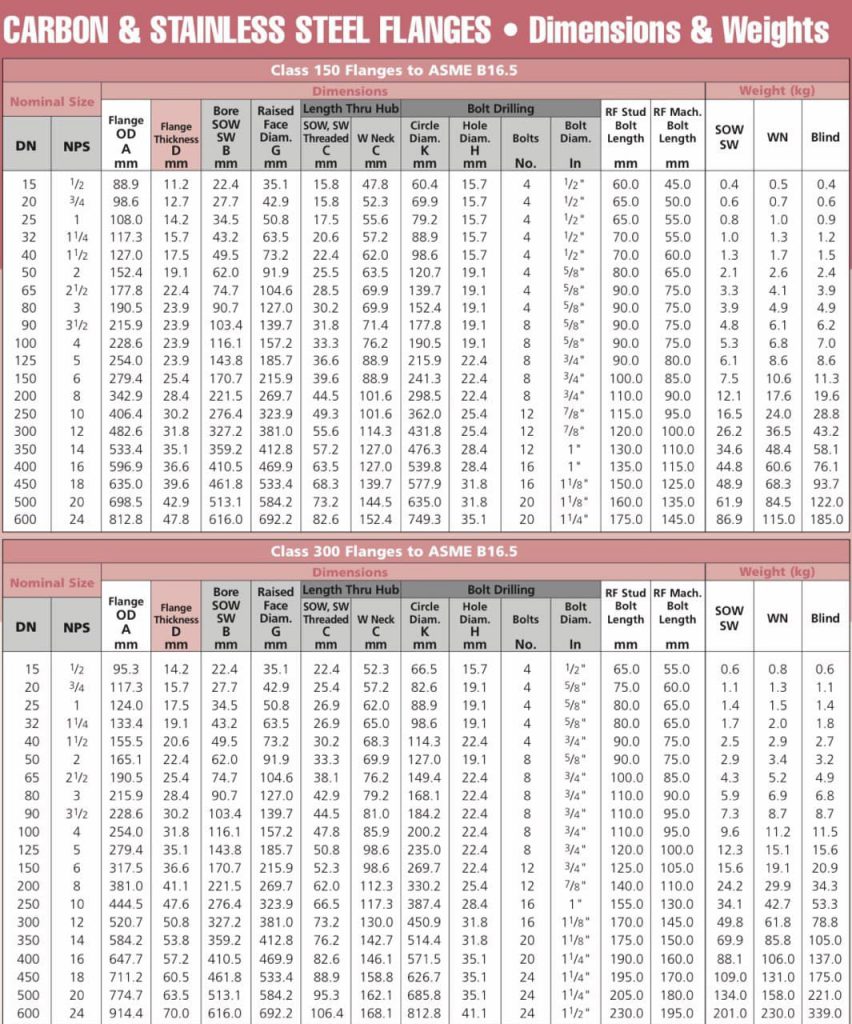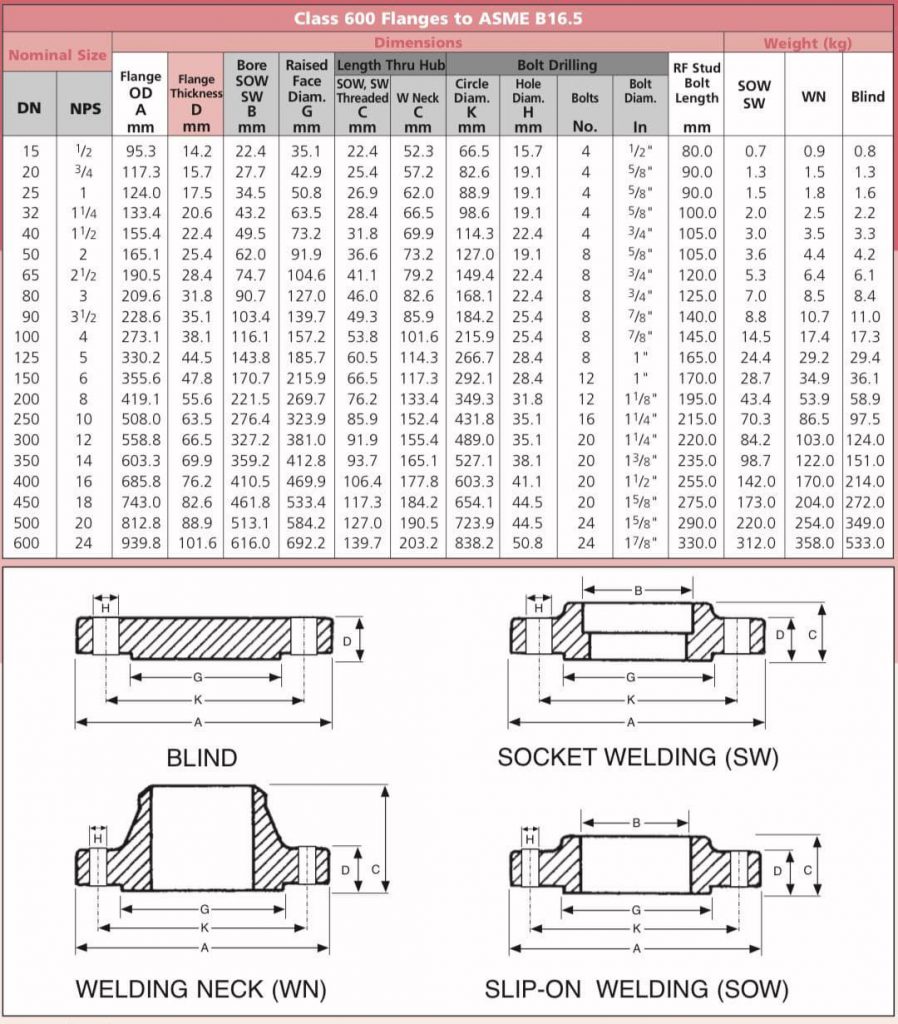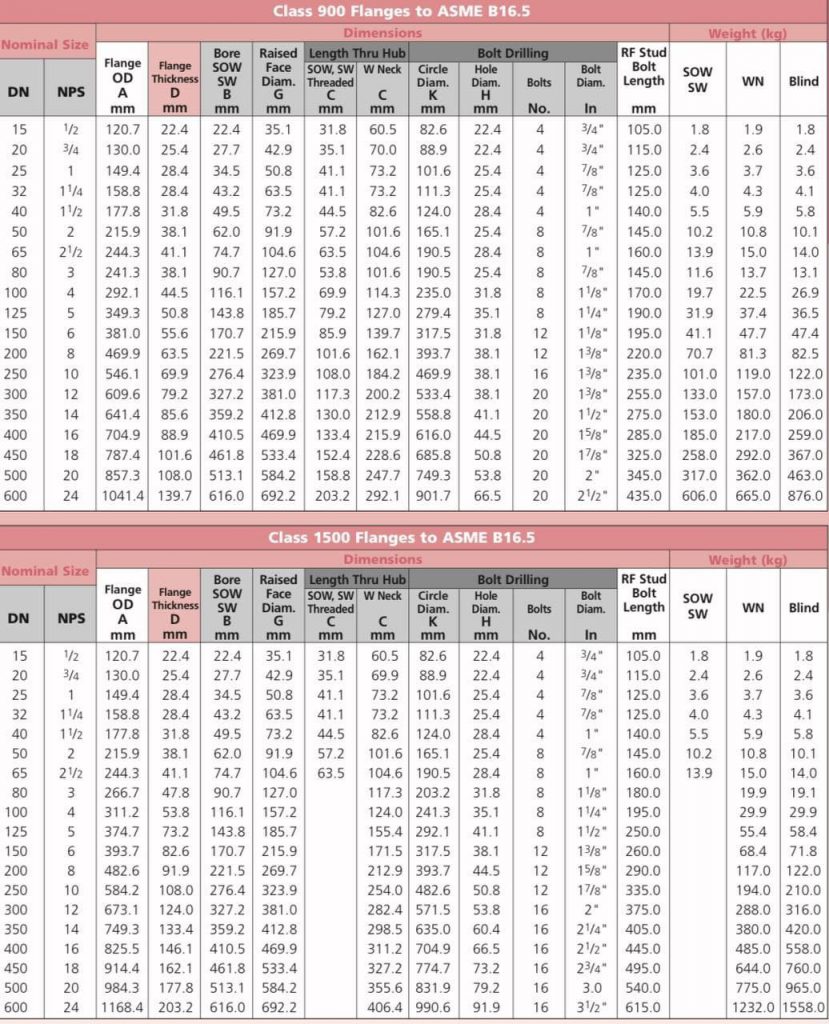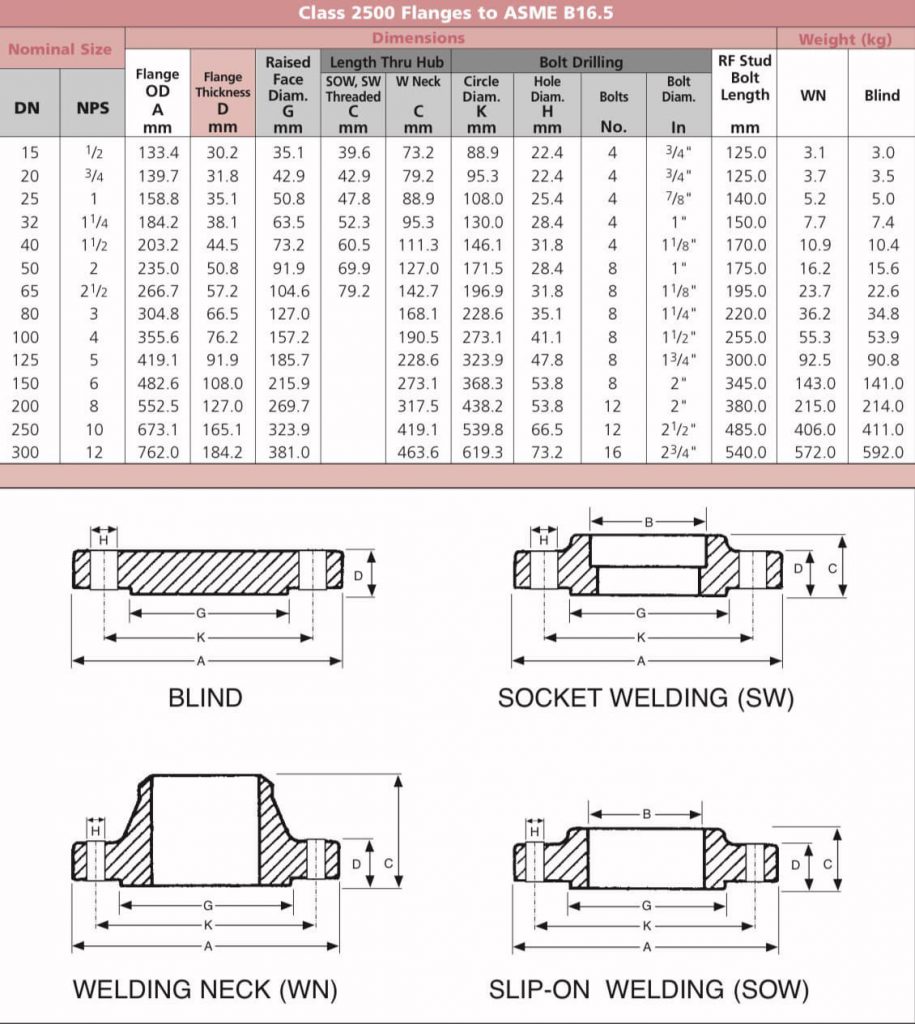Flanges General
A flange is a method of connecting pipes, valves, pumps and other equipment to form a piping system. It also provides easy access for cleaning, inspection or modification. Flanges are usually welded or screwed. Flanged joints are made by bolting together two flanges with a gasket between them to provide a seal.
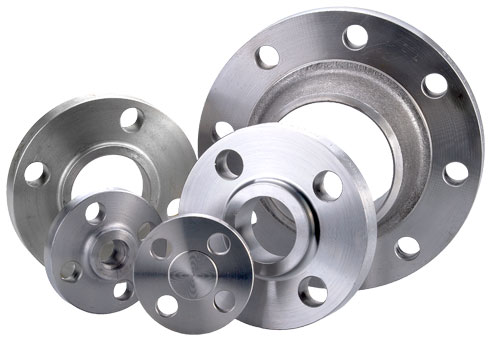
TYPES OF FLANGES
• Welding Neck Flange
• Long weld neck
• Slip On Flange
• Socket Weld Flange
• Lap Joint Flange
• Threaded Flange
• Blind Flange
• Orifice Flange
• Spade and spacer
• Spectacle blind
Materials for Flanges
Materials used by PTS:
• CARBON STEEL
• STAINLESS STEEL (304,316L,321,347)
• A350 (LF2,LF3)
• A694 grade 42,52,60,70
• INCONEL
• MONEL
Size :
1/2″ – 60″ INDUSTRIAL FLANGES
FLANGE SPECIFICATIONS
Standard
….
Notice :
The current ANSI / ASME/API flange specifications of B16.5 and B16.47(A & B), API 6A trace their roots to the old B16.1 specification from decades past, which consisted primarily of cast iron. This specification in turn was developed from the original AESC / ASA committee B16 in the 1920s.
For reference, head on over to:
*ANSI stands for “American National Standards Institute” and more information can be found on their website: https://www.ansi.org/
**ASME Stands for “American Society of Mechanical Engineers” and more information can be found on their website: https://www.asme.org/
Pressure Classes of Flanges
Forged steel flanges ASME B16.5& ASME B16.47 A-B & API 6A are made in seven primary Pressure Classes:
150 – 300 – 400 – 600 – 900 – 1500 – 2500 -3000-5000-10000-15000
